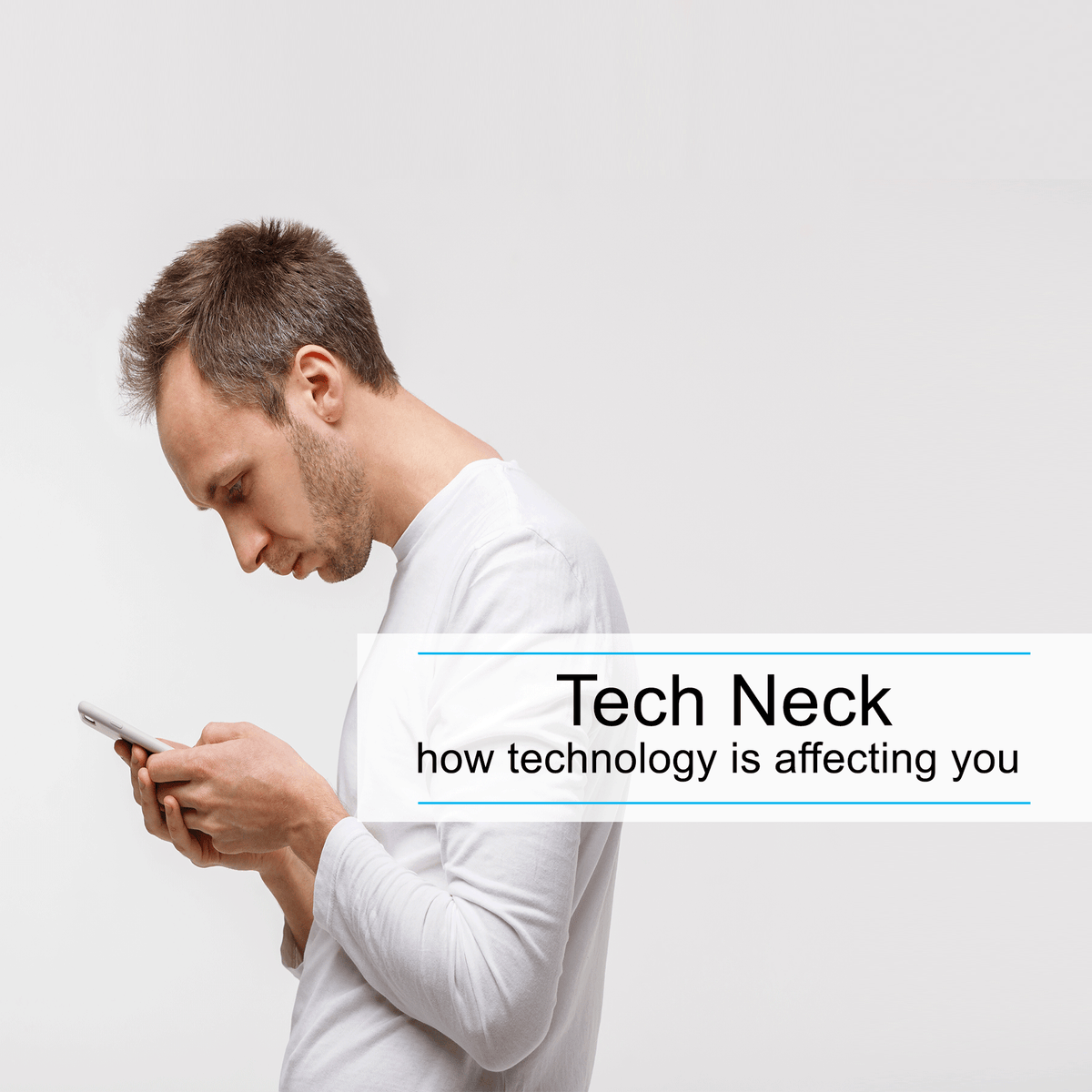
Why Tech Neck Should Worry You and How to Fix It
|
|
Time to read min
|
|
Time to read min
In today’s digital age, where technology pervades every aspect of our lives, from work to leisure, the prevalence of tech neck has reached alarming proportions. But what exactly is tech neck, and why should we be concerned about it? Tech neck, a term coined to describe the adverse effects of prolonged device usage on posture, has become a widespread issue affecting individuals of all ages. This phenomenon is characterized by a forward-leaning posture, rounded shoulders, and a dropped head – a posture commonly adopted while using computers and smartphones.
Tech neck, a term coined to describe the adverse effects of prolonged device usage on posture, has become a widespread issue affecting individuals of all ages. This phenomenon is characterized by a forward-leaning posture, rounded shoulders, and a dropped head – a posture commonly adopted while using computers and smartphones.
The detrimental consequences of tech neck extend far beyond mere discomfort. Our bodies are intricately interconnected, and any deviation from the natural alignment can have profound implications for our health. Imagine the weight of your head increasing from its average of 10 to 12 pounds to a staggering 27 pounds when tilted forward. This unnatural stress on the cervical spine can lead to a myriad of problems, including cervical arthritis, disc herniation, headaches, and even breathing difficulties.
The detrimental consequences of tech neck extend far beyond mere discomfort. Our bodies are intricately interconnected, and any deviation from the natural alignment can have profound implications for our health. Imagine the weight of your head increasing from its average of 10 to 12 pounds to a staggering 27 pounds when tilted forward. This unnatural stress on the cervical spine can lead to a myriad of problems, including cervical arthritis, disc herniation, headaches, and even breathing difficulties.
Research has shed light on the severity of the issue. A study published in Surgical Technology International demonstrated that the degree of forward head tilt directly correlates with the amount of stress exerted on the cervical spine. The more pronounced the tilt, the greater the strain, potentially leading to premature degeneration and the need for surgical intervention. Moreover, findings from a study in Scientific Reports revealed that habitual tech neck behavior can result in the development of bone spurs on the neck, further exacerbating the issue.
But why has tech neck become so prevalent in today’s society? The answer lies in our increasingly sedentary lifestyles and the omnipresence of electronic devices. Whether for work, entertainment, or communication, many of us spend hours hunched over screens, unwittingly subjecting our bodies to prolonged stress and strain. Coupled with a lack of awareness about proper posture and ergonomic practices, this sets the stage for the widespread occurrence of tech neck.
So, what can be done to mitigate the effects of tech neck and promote healthier habits? Firstly, awareness is key. Understanding the impact of prolonged device usage on posture and spinal health is the first step towards prevention. Incorporating regular breaks and stretches into your routine can help alleviate muscle tension and reduce the risk of postural imbalances.
Furthermore, investing in ergonomic equipment, such as adjustable desks and supportive chairs, can significantly improve workplace posture and reduce the strain on the neck and spine. Simple adjustments, such as raising your device to eye level and maintaining a neutral spine, can make a world of difference in preventing tech neck.
Additionally, incorporating strength and flexibility exercises targeting the neck, shoulders, and upper back into your fitness regimen can help counteract the effects of prolonged sitting and screen time. Posture corrective exercises can contribute to improved posture and spinal health.
Tech neck is a pervasive issue in today’s technologically driven world, with far-reaching implications for our health and well-being. By understanding the causes and consequences of this condition and taking proactive steps to address it, we can safeguard our posture and mitigate the risks associated with prolonged device usage. Remember, prioritizing spinal health today can lead to a happier, healthier tomorrow. So, let’s stand tall, shoulders back, and break free from the grip of tech neck.
